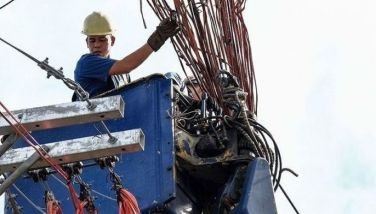Rice production and imports 2018

The National Food Authority (NFA) has been in the news lately. Pictures of near empty government rice warehouses appearing in newspapers brought home the reason for the spike in the price of rice. This has caused a flurry of presidential actions.
Liberalizing rice imports. President Duterte transferred the agency’s policy-making body to the agriculture department from the Office of the President to effect a change in management policy.
More important, the President also ordered that imports of rice be allowed to more traders, changing the current system of licensed traders that the NFA has fostered and cultivated.
If presidential words prevail, a more open trading in imported rice will cause the price of rice to fall and stabilize in the country. Under current rules with the WTO (World Trade Organization), the country is allowed to keep quantitative restrictions on rice up to around 805,000 metric tons of rice, but subject to tariff of 35 percent ad valorem, no longer at 40 percent ad valorem from the previous regime of quantitative restrictions.
The President signed Executive Order 23 in April 2017 to continue the quantitative restrictions, intending that they would be also agreed to by the WTO.
The President’s statement on imports has in mind the current system of import restrictions under WTO. For the moment, this is up to 2020, which is the extent of the current expectations of the government in relation to its request to retain the current import system. (Beyond that time, the country would be required to allow the imports without quotas, although they could be tariffied.)
Free trade in rice will be a boon to consumers, who are mainly the country’s wage earners, for that would mean cheaper rice. The country would have access to supplies from the world’s efficient suppliers of rice for some of its needs. This would make it possible to stabilize food prices because the country has access to low priced rice.
Singapore and Hong Kong, both of which never had any rice agriculture due to absence of land, have never experienced serious food price crises. They buy their need in food from the world, including all the rice needs of their residents.
A policy regime of liberalized imports in rice would expose domestic rice producers to more competition. Because the country has pockets of good lands suitable for rice agriculture, these production centers could still provide a veritable supply of output. The domestic rice industry would be be induced to become more efficient producers through the stress of competitive pressures.
Most economists agree that the liberalization of rice imports has long been overdue. Such a move will make the price of rice at retail to fall. Imports will raise the supply that enter the retail market.
The price of rice in the world market – heavily participated in by the large producers of Southeast Asia, our normal source of imports – is much lower than the domestic retail price at home.
Self-sufficiency in rice no longer holds. Self-sufficiency is not a feasible economic objective anymore given our land resources. Our lands less suited for rice agriculture could be used for other high-value commercial crops and for fancy commercial varieties of rice. Our very large population of 100 million people will continue to grow in numbers for decades to come.
As long as the government extends support to domestic production, the domestic needs for rice would still be supplied mainly by domestic suppliers. Encouragement of domestic production would come from government support of investments in irrigation, transport, drying facilities, and sustained support of farm extension services and research, as well as the availability of credit to the rice sector.
However, it is a foolish wish to hope that all these would be able to supply all the country’s needs for rice. Pushing production to the limit could only lead to rising costs, making locally grown rice even more expensive. The reason for this is limited land and the associated limits of productivity. (Need I stress the law of diminishing returns?). Low-cost producers in Southeast Asia will have much larger capacity to expand production without rising costs.
A more rational food security policy. In the face of these realities, we need a rational policy toward rice imports. Even then, the domestic production of rice remains as an important national objective. Our domestic agriculture would also need new avenues for growth in other commercial crops to which our remaining land and terrain is more suited.
The importation of rice needs to be integrated as an element of a domestic agricultural policy, assuring food security for the nation. We are in a propitious position to rely on ASEAN neighbors who are better endowed in rice production even as we focus our agricultural potentials on other export crops.
As a strategy, this will further help in our economic integration within the ASEAN. In this sense, the rice-exporting ASEAN countries of Thailand, Vietnam, Myanmar, and Cambodia could become part of our extended hinterland.
Even as this would happen, the main supply of rice would still come from our traditional rice producing regions. The government could and should continue to encourage domestic rice production.
Local farmers still have some edge in competition: though higher in farm cost, their output is nearer to our ultimate consumer market.
The government must recognize there is an upper limit to our efforts for domestic production of the crop. National policy requires that the supply of rice for domestic consumption is sustained by domestic production and a realistic assessment of import needs.
Moreover, a low price of rice that is also stable nourishes the economic competitiveness in the effort to grow and industrialize.
Food security compels a proper balancing of domestic production and import needs. Import needs must be planned for every crop year as an assessment exercise for fulfilling the country’s food security requirements.
Even as such recognition of imports is part of the planning, the support of policies to rice agriculture cannot be taken for granted. Infrastructure and institutions related to rice agriculture need to be strengthened.
Government support of infrastructure development for agriculture is critical for rice production, as well as for other crops. The expansion and maintenance of irrigation networks and of flood control projects are part of this support.
The strengthening of economic institutions includes improvements in rural credit, support of farm cooperatives, the continuation of farm technical assistance, and support of research and development.
My email is: [email protected]. Visit this site for more information, feedback and commentary: http://econ.upd.edu.ph/gpsicat/
- Latest
- Trending






























